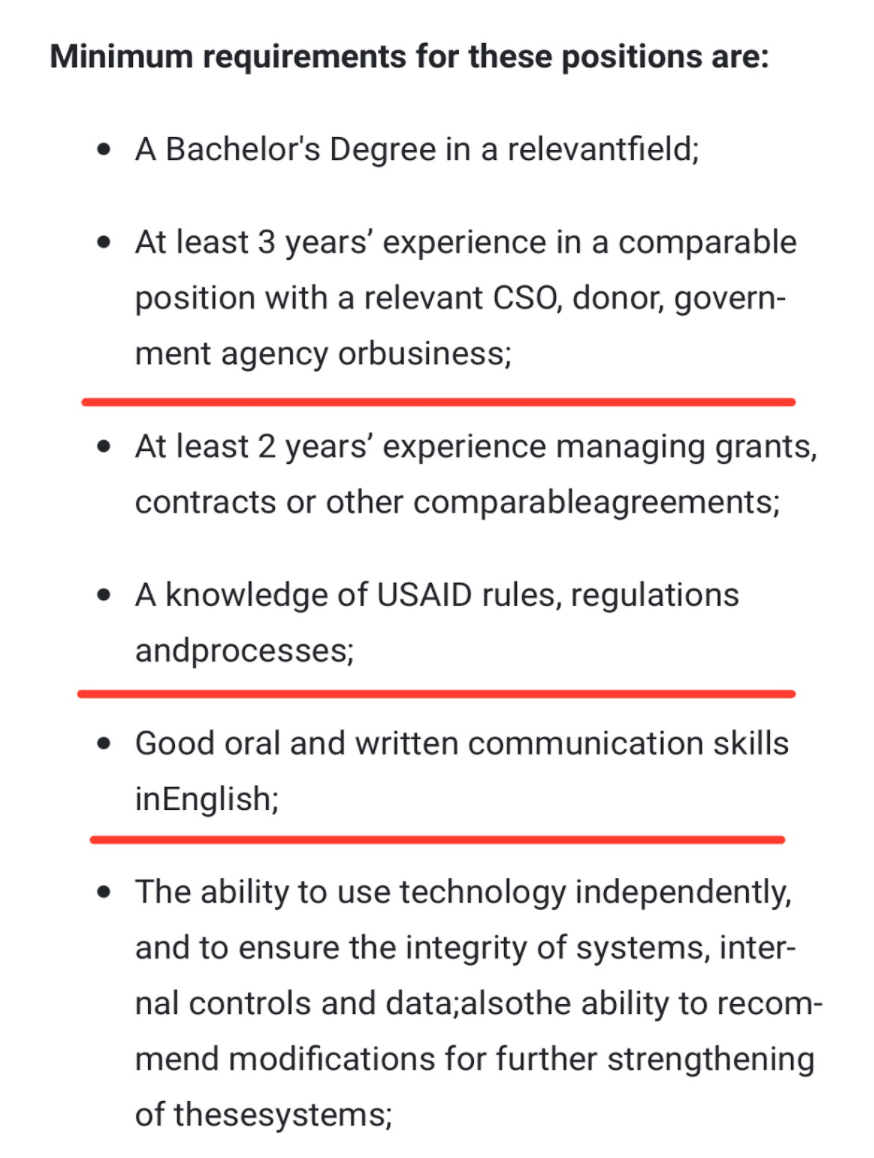A rejected resume time and time again can be the most nerve-wracking experience during a job search.
No matter the level of your professional experience, the competition is tough out there - most of the time, you send what seems like countless resumes only to hear back from very few jobs.
After all the time and energy you spend applying, no one can blame you for thinking: “what gives?”
Well, like with pretty much everything else in life, there are ways to ‘outsmart’ your competition and keep your resume from getting rejected once and for all.
This is exactly what this article is here to teach you! Read on to learn about our top tips on how to brush up your resume and get more interviews.
Tip #1. Focus on Achievements Instead of Responsibilities
- One of the most common mistakes many job-seekers make is listing only their responsibilities under their work experience section.
You might be wondering, why is that a mistake?
The thing is, HR managers are well aware of what the responsibilities for most job positions are because said responsibilities tend to be similar.
Let’s say, for example, that you are a copy-editor. Your responsibilities would be:
- Proofread text and correct spelling, grammar, and punctuation.
- Verify facts and information, such as dates and statistics.
- Check the text for style and editorial policies.
If you follow this practice, your resume will look almost exactly like that of the majority of other copy editors and will scream “nothing special to see here.”
This is why listing your achievements on your resume will make the difference.
Achievements do a better job showcasing the skills that could set you apart from other applicants and land you an interview.
Here’s how listing achievements over responsibilities would look like for a copy-editor:
- Raised email newsletter subscriptions rate by 30% in the first 3 months.
- Improved readability by increasing adherence to editorial policies up to 80%.
- Created a system to proofread text and correct spelling that decreased editing time by two hours.
All this being said, we are aware that not all jobs make it easy to list achievements over responsibilities. As a clothing shop worker, for example, you might not get many chances to distinguish yourself professionally.
No reason to beat yourself up over it. In those cases, only listing responsibilities is totally OK.
#2: Always Tailor Your Resume
- Another common mistake job-seekers make that gets their resume rejected is using exactly the same resume to apply for many job positions.
- This can cause your resume to never reach the hands of the HR manager because it might not even pass the Applicant Tracking System (ATS). ATS is a software that helps companies filter through the countless job applications they receive daily.
The way to overcome this is by creating an ATS resume tailored to the job you are applying for.
Now, we know that certain sections, such as your education, cannot really be tailored for each job you apply to, but your past work experiences sometimes can.
When that’s the case, always tailor your resume to the job you are applying for.
Say you’re applying as a Program Officer for a Civil Society Organization project. The responsibilities for a related job position are as follows:

Now, assuming that you qualify for the position, the best practice here is to highlight how your previous experiences make you the perfect candidate. Those can be professional experiences or educational/volunteering experiences for entry-level job-seekers.
This is tailoring your resume for specific job openings and trust us: the results are worth the effort.
In this particular case, for example, your aim would be to show the HR manager:
- Previous experience with relevant CSOs or any type of organization and your achievements there.
- Your knowledge of USAID rules and regulations and a general understanding of grants and projects’ processes. You could mention courses, or provide proof of certifications or of any relevant documents that testify to your claims.
- Provide proof of excellent English communication skills - be they written or oral.
Again, we are aware you might not be able to tailor your resume for each position you are applying for so you don’t get rejected, as that would require years of experience on your back.
In those cases, take the high road and be truthful about what skills you can bring to the position, without going the extra mile to tailor your resume to every single job.
Tip #3: Data, Data, and Data!
- Simply listing your achievements won’t get you that far either. Generalized achievements can look like they were copy-pasted from some corner of the internet and won’t go far impressing the recruiter.
One thing that can really bring your achievements to life is backing them up with as much data as possible.
Specifically, for every achievement or point of professional pride you decide to include in your CV, try to accompany it with numbers, a timeframe and your actions.
To get a sense of exactly how that’s done, try to follow this HR-proof formula whenever it is possible:
Accomplished [X] as measured by [Y] by doing [Z]
Laszo Bock, who came up with it, paraphrases the formula as the method of “starting with an active verb, numerically measuring what you accomplished, providing a baseline for comparison, and detailing what you did to achieve your goal.”
If you’re not too convinced, here are two examples of a common accomplishment entry and one following this very formula on a resume:
- Created a computer grant-awarding system that made it easier to manage over €1 million awarded to civil society organizations for a two-year period.
- Managed grants and awarded financial grants to civil society organizations.
Which one do you think looks better? Obviously, the second example doesn’t just show you know what you’re doing, but that you know how to do it well.
If you follow these examples, you’re upping your chances of not getting your resume rejected!
Tip #4: Avoid Fluff To Not Get Rejected
- Do you know how college students sometimes reach a paper’s word count by adding unnecessary words, complicated expressions, and general fluff?
- Well, that’s a hard no-no when it comes to building your resume and a reason why it might keep getting rejected.
HR agents and recruiters can see right through the fluff and trust us - that is not what they’re looking for. Instead, you want your resume to be packed with practical information. If anything, the HR agent will be low-key thanking you for not wasting their time with redundancies.
This might leave you wondering what kind of information to include in your resume, especially when it comes to the most important section - your work experience. Well, that mostly depends on your level of experience. For example:
- New job-hunters: if you lack experience, this might be the toughest-to-avoid-fluff case. In any case, don’t fall prey to fluffing it up. Instead, be honest and keep the work experience section empty, and instead focus on all other sections. Another thing you can do is tailor your experience at non-profits, student organizations, volunteering positions - if you have any - as work experience.
- Entry-level candidates: in the work section, you can list all the jobs you’ve had up until that point.
- Mid-level professionals: mention the work experience that is relevant to the position you are applying for.
- Senior professionals: list a maximum of 15 years of work experience.
The same rule applies to the rest of the sections. How to manage that?
Well, for starters, it is preferable that your resume isn’t over 1 page - keep this in mind when deciding what information to include and what to leave out. This means that you only have one page to convince the HR agent of your strong points and capabilities - be concise, relevant, and to the point.
Additionally, make sure you attend to the most important sections first - your professional experience, education, and skills like languages and computer proficiency. Only after you’ve covered those - and if you have the additional space - include additional info, like hobbies and interests.
If you want to learn more about creating a resume that will never be rejected again, head over to some of our other articles:
- How to Write a CV[31+ Examples]
- Resume Examples & Guides for Any Job [60+ Examples]
- Resume Structure & Formatting Guide [Get Hired in 2023]
- How to Write a Resume - Beginner’s Guide
Key Takeaways
By now you should have a good understanding of the most common mistakes that can get your resume rejected. Let’s do a quick recap of all the mistakes and the respective solutions we covered:
- Prioritizing your responsibilities? Bad practice that will get your resume rejected. Highlighting your achievements? A good practice that won’t get your resume rejected.
- Applying for many jobs with the same resume? Bad practice. Tailoring your resume to match with the responsibilities listed under the job ad? Good practice.
- Providing general achievements? Bad practice. Measuring your achievements with hard data? Great practice!
- A great formula that can help you with that goes as follows: Accomplished [X] as measured by [Y] by doing [Z].
- Adding fluff just to reach the page limit or give your resume edge over the rest? Bad practice. Jam-packing your resume with practical information? The best practice!

